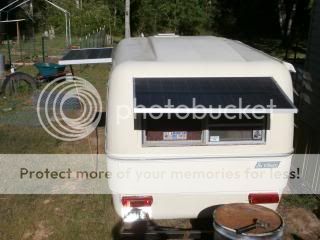Fearnoevil your AC will pull about 700 watts per hour. Watts is how much the item uses but it's normally talked about in kwh which would be 1,000 watts in an hour, you would get to that place many ways, 20 100w light bulbs for 30 minutes, 100 10w fans for 60 minutes, running your ac for 40 minutes.
Think of it like gph in water or mph with a car, many different ways to come to the same place.
Either way, if you use 6,500 watts a day either from running your AC for 9 hours or a lot of little items you will need a way to store that energy (batteries) and put the energy back (solar, hydro, gen, grid tie). 1,000 watts of solar panels won't cut it, that will give you maybe 3,500 watts in perfect condition or to put that into perspective, about $0.45 worth of grid power per day.
Also, if you were to do 12 batteries you would need 2v cells and a 24v system to avoid parallel connections. If you have the money to buy, store and care for 12-18 batteries buy more solar, panels are cheaper. If you don't have the roof space for that much, I'm guessing you also don't have a way to lug almost a ton of batteries around with you either.
I have a LARGE system for a mobile system and I'm only producing 3,000 watts per day. I don't have room for anything else on my roof, seriously, nothing. I had to make a special platform to even access any part of my roof.
You are going to have to get more realistic about what you're going to be able to use on about two quarters worth of grid power per day.
Think of it like gph in water or mph with a car, many different ways to come to the same place.
Either way, if you use 6,500 watts a day either from running your AC for 9 hours or a lot of little items you will need a way to store that energy (batteries) and put the energy back (solar, hydro, gen, grid tie). 1,000 watts of solar panels won't cut it, that will give you maybe 3,500 watts in perfect condition or to put that into perspective, about $0.45 worth of grid power per day.
Also, if you were to do 12 batteries you would need 2v cells and a 24v system to avoid parallel connections. If you have the money to buy, store and care for 12-18 batteries buy more solar, panels are cheaper. If you don't have the roof space for that much, I'm guessing you also don't have a way to lug almost a ton of batteries around with you either.
I have a LARGE system for a mobile system and I'm only producing 3,000 watts per day. I don't have room for anything else on my roof, seriously, nothing. I had to make a special platform to even access any part of my roof.
You are going to have to get more realistic about what you're going to be able to use on about two quarters worth of grid power per day.



























































